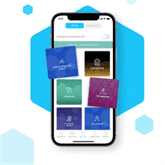Préstamos Zaimoo: prestamos faciles y seguros préstamos amigables de el siglo XXI
14 July 2023300percent Put Incentive Web based casinos Best Confirmed Australian Gambling establishment Websites At the Betzoid Com
15 July 2023There was no mention of the error upon deployment from VS Code (or Core Tools), so I guess the lesson here is to always run an npm build locally, prior to deployment, to ensure that everything is building correctly. The steps I took differently is that I didn’t deploy from VS Code the second time. Instead, I created an example HTTP Trigger Function locally following this guide, tested and confirmed it worked locally, then basically stopped at Step 5 of Run the function locally. Once the new Function App was created I couldn’t see anything, same as before, until I pushed a minor for-the-sake-of-it commit, which triggered the CI/CD pipeline and updated the whole Function App.

This information allows the production and quality teams to focus on the Critical to Quality (CTQ) processes, which flow down into the Level 4 QFD for further examination. Quantitative considerations heavily influence the quality function deployment framework. A business that uses the quality function deployment must make sure that its practices for the collection of consumer data are robust and reviewed regularly. Since the QFD is dependent on customer data, the concept is also dependent on a company’s ability to collect and analyze that data proficiently. Quality Function Deployment can be described as a model used in Product Management that develops a product by prioritizing consumer – or customer – needs and preferences first. The model also promotes integrating consumer needs throughout the entirety of the product development process.
Deploy a Cloud Function
Quality function deployment helps product development teams create customer-centric products. It takes every stage of the product development process and ensures the VOC is prioritized. During manual application deployment, team members oversee each stage of the deployment process, review any changes, and ensure that the applications are secure and function correctly.

Th product planning phase begins with gathering customer feedback to develop the VOC. There may also be a competitive analysis to find the strength and weaknesses of your competitors. Before diving into the detailed process of quality quality function deployment definition, it is essential to understand its key components. These components form the foundation of the QFD methodology and help organizations effectively analyze and prioritize customer requirements.
What’s quality function deployment?
Deploying from Cloud Source Repositories also lets
- By using a structured approach, QFD ensures that customer needs and preferences are taken into account, resulting in products that are more likely to satisfy your target audience.
- They use this information to create and deploy updates, continuously improving the quality and efficiency of the applications.
- This is the first step in driving the VOC throughout the product or process design process.
- Along the way, it can help discover areas where your customer has an unmet need from you and your competitors.
- In order to remain competitive, organizations must determine what is driving the consumer’s perception of value or quality in a product or service.
- This section describes how to deploy a function from source code located in a
Cloud Storage bucket.
you deploy code hosted in a GitHub or Bitbucket repository. This section describes how to deploy a function from source code located in a
Application Deployment: Transforming Code into Software
Cloud Storage bucket. I thought for sure that an npm build was part of the deployment process and that errors would halt the deployment and be reported back, but that appears to be not the case. ● It enables the business to identify any activity that does not align with the product’s consumer-driven strategic objectives. According to the model, you must integrate customers’ feedback into each product component, which depends on principles such as the ‘Voice of the Customer’ and the ‘House of Quality.

The correlation matrix and competitor research do not affect the importance ratings, but they do provide additional insight to help you weigh which customer needs and design requirements matter most. As the app is built remotely and deployed as a package, it already runs from the deployment package. There is no universally accepted version of the house of quality; you’ll see many slight variations, and it also changes as you go further along the methodology phases.
The purpose of Quality Function Deployment is not to replace an organization’s existing design process but rather support and improve an organization’s design process. QFD methodology is a systemic, proven means of embedding the Voice of the Customer into both the design and production process. QFD is a method of ensuring customer requirements are accurately translated into relevant technical specifications from product definition to product design, process development and implementation. Implementing QFD methodology can enable you to drive the voice of your customers throughout your processes to increase your ability to satisfy or even excite your customers.
Software application development involves the design, development, testing, and deployment of applications. After deployment, developers, quality assurance professionals, and deployment teams gather and analyze performance data and user feedback. They use this information to create and deploy updates, continuously improving the quality and efficiency of the applications. The application deployment process refers to the specific stage during which applications and updates are made available to end users. The quality function deployment framework is based very much on the quantitative. It attempts to process data and then construct a diagnostic tool to identify the strength of each consumer requirement against the business’ potential – within the product development process – to deliver it.

There are several actions that could trigger this block including submitting a certain word or phrase, a SQL command or malformed data. The WGU Web Application Deployment and Support certificate includes industry certifications in Linux Essentials and AWS Cloud Practitioner. Our WADS certificate can enhance your résumé and give you a competitive edge as a web developer, cloud administrator, DevOps administrator, QA/QC engineer, cloud architect, or other IT professional. Effective use of QFD requires team participation and discipline inherent in the practice of QFD, which has proven to be an excellent team-building experience. By clicking “Post Your Answer”, you agree to our terms of service and acknowledge that you have read and understand our privacy policy and code of conduct.
You can’t “check it off” as completed since it is an ever-present ingredient every step of the way. Based on the product and component specifications found in the previous phase, this section identifies processes necessary to build features and deliver functionality. It is necessary to get feedback from the ultimate customers of the product as part of the initial phase of the quality function deployment framework. It’s a very technical-sounding name for a process that essentially helps businesses integrate the Voice of the Customer (VOC) into product development. Running from a package refers to the function app’s use of the deployment package’s contents during runtime in both cases. However, the way the deployment package is created and managed differs between remote build and zip deployment scenarios.
